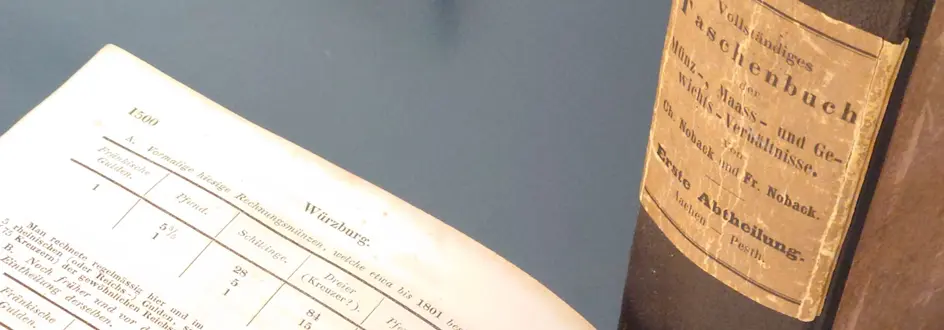
Linked data for historical metrology
Measurement is one of humankind's central concerns. Since Antiquity, humans have developed a myriad ways to measure the weight, size and value of commodities, currencies, objects, surfaces, distances and so on. Typically, earlier measurement procedures were valid only in restricted areas and for limited periods. This resulted in a large geographical and temporal variation. Since the sixteenth century, numerous accounts of measurement practices have been published in merchant manuals, economic dictionaries, lexica and encyclopaedia. The publication of reference works for merchants experienced its heyday in the nineteenth century, when local and regional measurement conventions were gradually replaced with unified measurement standards.
In the wake of the mass digitization of library collections all over the world, many of these works have resurfaced. With them, a wealth of information that was extremely hard to access prior to digitization is now at our fingertips. At the same time, however, hardly any guidance is available with regard to the contents, structure, reliability and use of these electronic resources. All we have are digitised reference works with their corresponding OCR texts. But how can we use them? What is possible with 'simple' search operations in the text? How and to what extent can semantic modelling enhance the exploration of these reference works?
The Digital Noback project addresses these research questions. It started in 2021 as a research and teaching cooperation of the research groups on Digital History (Werner Scheltjens) and Cultural Informatics (Christoph Schlieder). The project aims at extracting a knowledge graph from a nineteenth-century reference work famous for its exhaustiveness, reliability and up-to-date contents, the handbook published 1850 by Christian and Friedrich Noback.
Christian Noback und Friedrich Noback’s Vollständigen Taschenbuch der Münz-, Maass-, und Gewichtsverhältnisse, der Staatspapiere, des Wechsels- und Bankwesens, und der Usanzen aller Länder und Handelsplätze (Leipzig 1850).
Research topics
- Scenario-based planning methology for the semantic modelling of historical sources
- Ontology design for the Noback knowledge graph
Cooperation in teaching
- Wissensbasierte Modellierung serieller Quellen [Knowledge-based modelling of serial sources], project for students in the MSc program Computing in the Humanities, University of Bamberg, summer semester 2021
- Wissensextraktion und Geovisualisierung aus einer historischen Enzyklopädie [Knowledge extraction and geovisualization of a historical encyclopedia], project for students in the MSc program Computing in the Humanities, University of Bamberg, summer semester 2022
Contact
- Werner Scheltjens, Digital History, werner.scheltjens at uni-bamberg.de
- Christoph Schlieder, Cultural Informatics, christoph.schlieder at uni-bamberg.de
